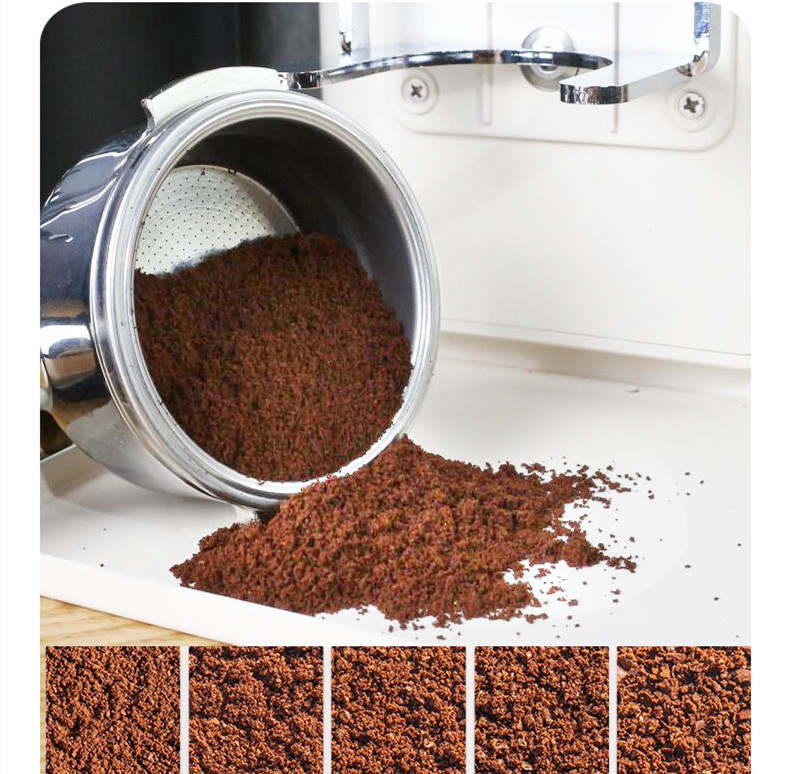How to Improve Coffee Taste Through Grinder Techniques and Adjustments
Fine-Tuning Grind Size for Balanced Extraction
The grind size directly impacts how water interacts with coffee grounds, influencing the extraction rate of soluble compounds like acids, sugars, and bitterness. A grind that’s too coarse results in under-extraction, leaving coffee tasting weak, sour, or salty. Conversely, a grind that’s too fine causes over-extraction, leading to bitterness or astringency. For optimal flavor, match the grind size to your brewing method:
- Espresso: Requires a fine grind (similar to table salt) to create resistance against high-pressure water, ensuring a 25–30-second extraction time. If shots run too fast, tighten the grind; if too slow, loosen it.
- Pour-Over/Drip: Use a medium grind (like sand) for even water flow. Adjust finer if the brew tastes flat or coarser if it’s overly bitter.
- French Press: Opt for a coarse grind (resembling breadcrumbs) to prevent sediment while allowing a 4-minute steeping period. A too-fine grind here will make the coffee gritty and harsh.
Experiment in small increments (e.g., 0.5 notch adjustments on a grinder) and taste-test after each change to isolate the effect of grind size on flavor.
Maintaining Grinder Consistency to Avoid Uneven Extraction
Inconsistent grind particles create pockets of over- and under-extraction, muddling the coffee’s taste profile. Blade grinders, which chop beans randomly, often produce uneven results, while burr grinders crush beans uniformly for predictable extraction. To improve consistency:
- Use a Burr Grinder: If possible, prioritize conical or flat burr models over blade grinders. Burr grinders allow precise adjustments and minimize fines (ultra-small particles that extract rapidly).
- Check for Retention: Some grinders trap grounds in their burrs or chutes, leading to stale coffee mixing with fresh grounds. After grinding, tap the grinder lightly or run a small amount of fresh beans through to clear residual particles.
- Sift for Precision (Advanced): For manual control, sift grounds through a fine mesh sieve to remove excess fines. Re-grind larger particles or discard them, depending on your preference for clarity or body.
Consistency is especially critical for espresso, where even minor variations in grind size can disrupt crema formation and flavor balance.
Adjusting Grind Settings Based on Bean Freshness and Roast Level
Freshly roasted coffee beans behave differently than stale ones, and roast levels (light, medium, dark) influence grind requirements:
- Fresh Beans: Recently roasted coffee (within 1–2 weeks) releases CO2, which can cause channeling in espresso or uneven blooming in pour-over. Start with a slightly coarser grind than usual and adjust finer if under-extracted. For stale beans (over 4 weeks old), a finer grind may compensate for lost flavor complexity.
- Light Roasts: These beans are denser and harder, requiring a finer grind to extract their nuanced, acidic flavors. If the coffee tastes overly bright or sour, grind finer to increase extraction.
- Dark Roasts: Darker beans are more porous and brittle, extracting faster. Use a coarser grind to prevent bitterness and emphasize their chocolatey or nutty notes. If the coffee tastes burnt, switch to a coarser setting immediately.
Always adjust grind settings in response to taste, not just appearance. For example, a light roast might look “fine” at a medium setting but still taste underdeveloped if the grind isn’t fine enough.
Avoiding Common Grinder Mistakes That Ruin Taste
Overheating the Grounds
Grinding beans at high speeds or for prolonged periods generates friction, heating the grounds and volatilizing delicate flavor compounds. To prevent this:
- Use a low-speed grinder or grind manually in short bursts.
- Let the grinder rest for 1–2 minutes between large batches to cool down.
Static Electricity in Dry Environments
Low humidity causes grounds to cling to the grinder’s burrs or container, leading to uneven dosing and wasted coffee. Static also traps aromatic particles, reducing flavor intensity. Combat this by:
- Grinding in a slightly humid room (e.g., near a steaming kettle).
- Lightly misting beans with water before grinding (use sparingly to avoid clumping).
- Wiping the grinder’s exit chute with a damp cloth to reduce static buildup.
Neglecting Grinder Maintenance
Oil residue from dark roasts or old grounds stuck in the burrs can turn rancid, imparting off-flavors to fresh coffee. Clean your grinder regularly by:
- Brushing out loose grounds after each use.
- Using a grinder cleaning tablet or rice (sparingly) to absorb oils (check manufacturer guidelines first).
- Disassembling removable parts (if possible) for deep cleaning every 1–2 months.
By mastering grind size, consistency, and adjustments for bean freshness, you can transform bland coffee into a nuanced, well-balanced brew. Small, intentional changes to your grinding routine will yield significant improvements in taste clarity and complexity.


